Beach hopping – Cycling the Bahía Concepción
Country: Mexico
From Santa Rosalía to Loreto
Lesson learned: Better carry too much food than too little
Most wonderful miracle: The Bahía Concepción’s beaches
Animals we saw: vultures, seagulls and herons
Days on the bike: 3
Kilometers cycled: 208
Average kilometers per day: 69.33
Total kilometers cycled: 27,208
Cycling the Bahía Concepción.
Missed the last entry? Here it comes: Heat wave in the desert – Baja California Sur by bike part 1
Blog auf Deutsch: Die Strand- und Oasenroute – Baja California Sur mit dem Fahrrad
It was an easy ride down south. Since we usually got started around sunrise, we squeezed an entire day in one morning and reached Mulegé by noon. Mulegé was our second oasis town.
The spring was situated nearby the sea and a wide but flat river led the spring water to the mouth. Palm trees provided the center of town with shade, while the outskirts were home to giant cardons (elephant cacti or Pachycereus pringlei). In between you could see both these plants grow next to each other.
We met with Abraham, principal of the Cecyte School, who invited us over for a presentation. Abraham knew every single student at his school. While he was showing us around he kept on pointing at some of the students, saying things like “This is Maria, she is a great basketball player. And this is José, he helped planting our community garden. And here is Tania, she has won several boxing matches.”
We have met so many highly motivated school principals here in Mexico. Take Jose Carlos from the COBACH in Santa Rosalía for example. He believes that it is most important to feed the student’s creativity with tasks, so he started art projects (Miguel painted a large mural together with the students there) and a public library.
For Martin from another Santa Rosalía school, it was most important that the students learn to be curious, empathic, respectful and accepting with other cultures. He wants them to grow up free from prejudices, that’s why he always appreciates visitors from far away who take some time to talk to the students.
A Tijuana principal spent his entire holidays painting the walls of the school’s library with popular comic figures, so that the kids were more eager to visit and read. Abraham here likes to motivate his students to start their own projects.
With his support they have initiated a recycling project, several workshops to turn old car tires into art and furniture, and an edible school garden. For Abraham it was important that his students learn to get active instead of complaining.
The Bahía Concepción south of Mulegé was famous for its sandy beaches with the clear water. We decided to try and visit as many of these beaches as possible in one day. Unfortunately we didn’t always find the entrances from the highway, but yet we visited quite a lot of beaches and saw some other ones from above.
Every couple of kilometers there was another yellow sandy beach with the turquoise and blue water, surrounded by giant cardons. On most beaches there were a few wooden Palapas, but not a single hotel or even a town.
It was another hot day, so we put on cotton shirts and simply bathed with all our clothes on. That way we felt the refreshing wind on the way to the next beach. At the “El Burro” beach we stopped for lunch break and ran into Jesús and Susana, who spent the morning here with their kids. They invited us to help ourselves with their Ceviche (a raw fish salad with lots of lime), which was simply the perfect beach dish.
Tonight we camped at the Requesón beach. When the tide was low there was a narrow sandy path in between the water, that led to a neighboring island.
We spent the evening on our picnic blanket in the sand, felt the light wind, listened to some music, ate peanuts and waited for the stars to appear. At two in the morning the moon set, the sky turned pitch black and the milky way appeared. It was the perfect grand finale for the perfect cycling day.
Clearly we hadn’t covered all that many kilometers today, so we still had another 100 to go in order to reach Loreto. It was a hot morning and the lack of wind made us sweat before 7 am. Some vultures sat on top of the cacti and warmed their bodies up for the day to come. What a view!
We had a bit of a climb to do, before we found ourselves in a valley. After 30 long kilometers we finally reached the little restaurant that had been recommended to us for having “the best Machaca (dried fish or beef) Burritos far and wide”. I was so hungry, I counted the last few kilometers and reached the place with a loudly rumbling stomach.
“Sorry, we don’t have any food today”, the person in charge greeted us. “The cook never showed up. But there’s coffee and soft drinks if you want. And there’s another restaurant at kilometer 50”. I put lots of sugar into my coffee, hoping that it would keep the stomach happy for the next 12 kilometers.
When we finally reached the restaurant, we were greeted by the owner. “Sorry, we have to go now, our chefs have had a car accident with a cow and now we need to go and fill out all the paper work for them. There is another restaurant at kilometer 28 though.“ In case you wonder, no, the first place’s chef was not in the car that had the accident.
Another 12 kilometers later we learned that there was generally no food sold. In fact all they had was beer and one bottle of coke. So we bought the coke and asked for some hot water to prepare our instant camping food. We had committed the beginner’s mistake to buy too weak alcohol for our stove, so we were unable to get it started. We each had half a bag of noodles and half a bottle of coke before we continued the ride. “They do sell food at kilometer 31”, we were promised.
We were unlucky again though. All there was left was four bottles of soda. We bought three of them and waited for the owner to return from Loreto with the week’s stock. After all these sugary drink we had the calorie intake of three days and we were still hungry.
The owner’s sister Guadalupe and the little daughter Klara let us spend the lunch break on their property. Most people outside the big towns had an outside toilet with a bucket flush. The water was collected in barrels and used for the toilet as well as for dishes and for washing the hands.
It was greenish and had a few larvae and dead wasps in it. If you want to wash your hands, you can shovel it out with a cut milk canister, so you don’t touch the water in the barrel with your dirty hands.
Just after noon we continued the ride. It was only seven kilometers to go to the next military control, where there was said to be a cafeteria. Now guess what. It was closed. The restaurant at kilometer 23 was deserted and the one on kilometer 21 was closed.
The owners had gone for vacation, but the house sitter were very friendly and treated us with their noodle salad and fresh cheese from the region. We ate like there was no tomorrow. These two really were today’s heros.
We had nearly made it into town. At kilometer 11 there was another abandoned restaurant, and at 5 and 4 the shops were closed. The first and only open place that provided roasted chicken was at kilometer 1.5, in the outskirts of Loreto.
Loreto was the first big town since San Felipe. There were two large supermarkets, several hotels and hostels and a few campgrounds. The historic city center had cobble stones and romantic lightning. There was an old mission and a museum, several small cafés and restaurants.
It was a touristy place, but with lots of charm. We pitched the tent at “Palmas Altas”, a pretty and very green and shady little backpacker’s campground. We made friends with staff Adela and her brother-in-law Alejandro, who was a clammer.

In the late afternoon the boardwalk fills up with cyclists, runners, walkers and skaters. But in the afternoon we had it all for ourselves
At lunchtime he returned home with a big bag full of “Almeja Chocolata” (Megapitaria squalida). Hospitable as he was, he offered us a try. The Almeja Chocolata (called chocolate clam not for their taste but for the brown color of the shell) were the region’s special dish. They were eaten raw and alive with some salt and lime. Alejandro’s job was to collect them from the sea. He was paid about 1 Peso 50 for each, that’s 7-8 cents of a Euro.
I could imagine settling down here in Loreto for a while. The town was big enough to run a cinema, bars and restaurants, but small enough for easy cycling without traffic jams. But before we could think about settling down we still had a few thousand kilometers to go here in Mexico. Read more about a natural bath tub, a lot of sandy desert and how to cope with the heat in the next blog from Loreto to La Paz in the Baja California Sur: The last desert ride – Baja Sur by bike


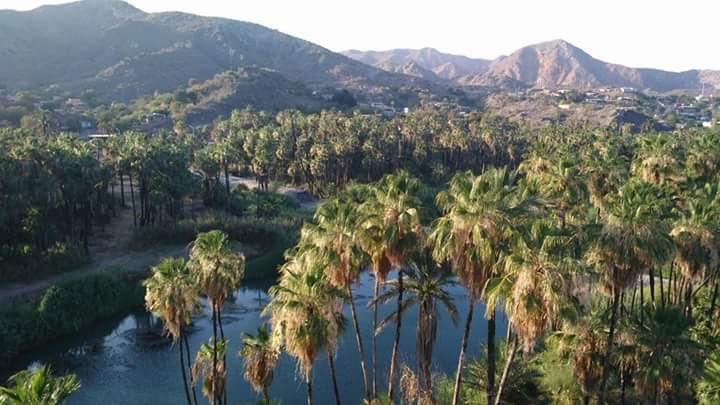
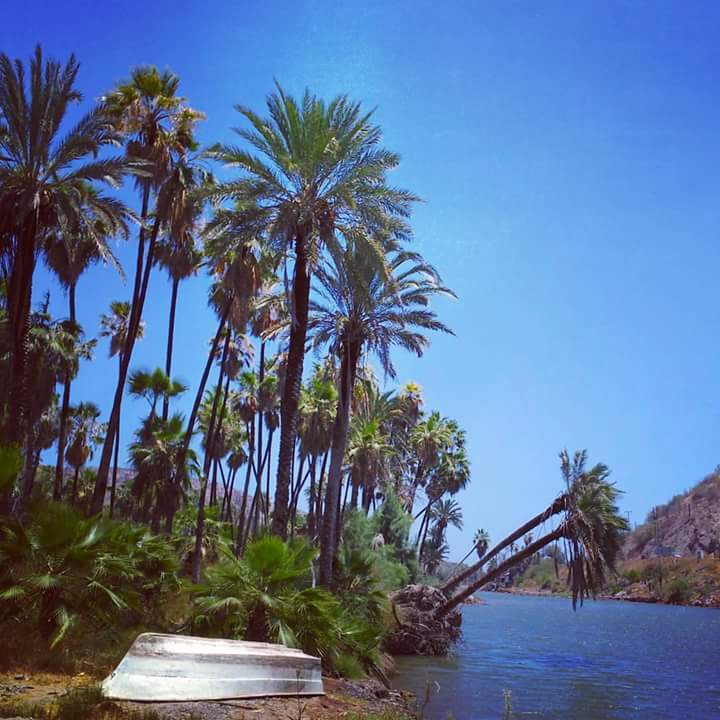

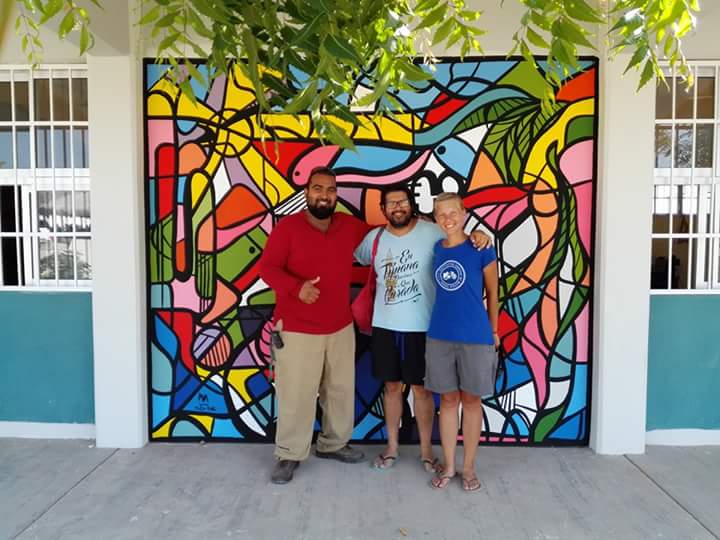
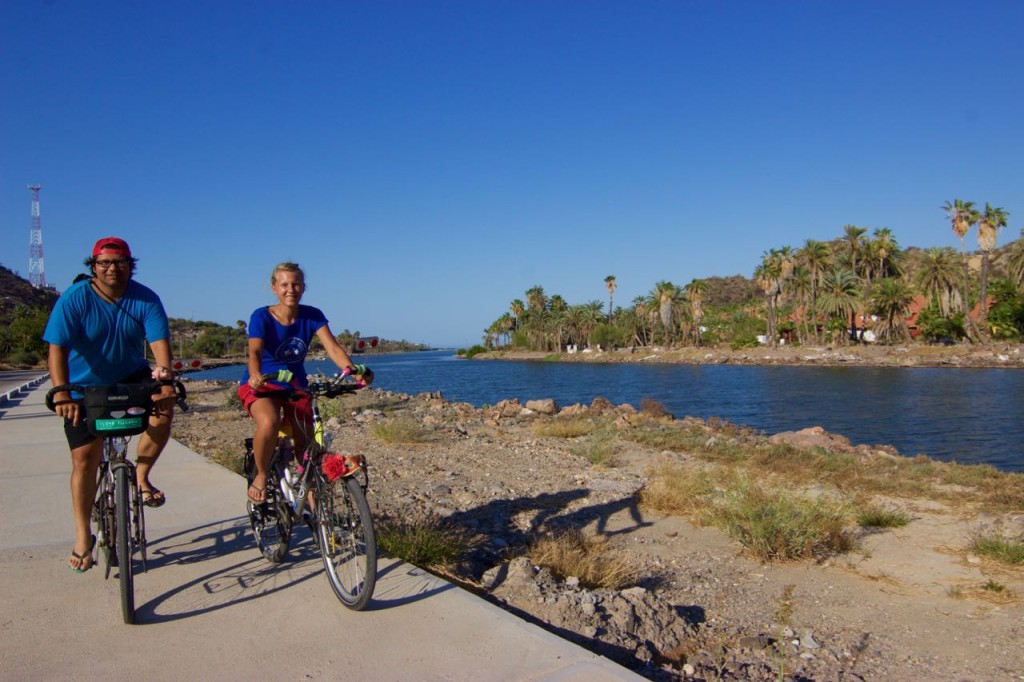
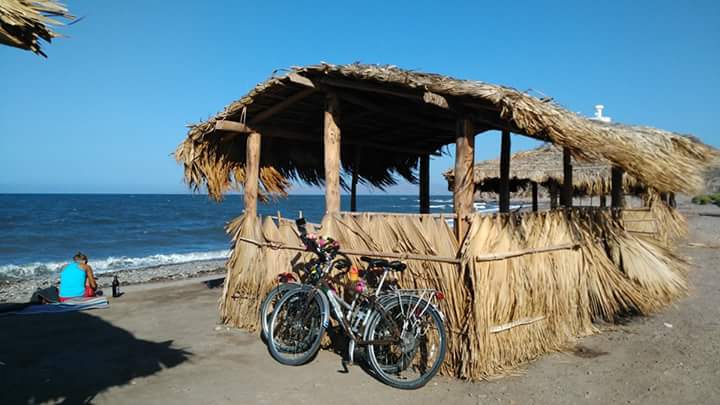
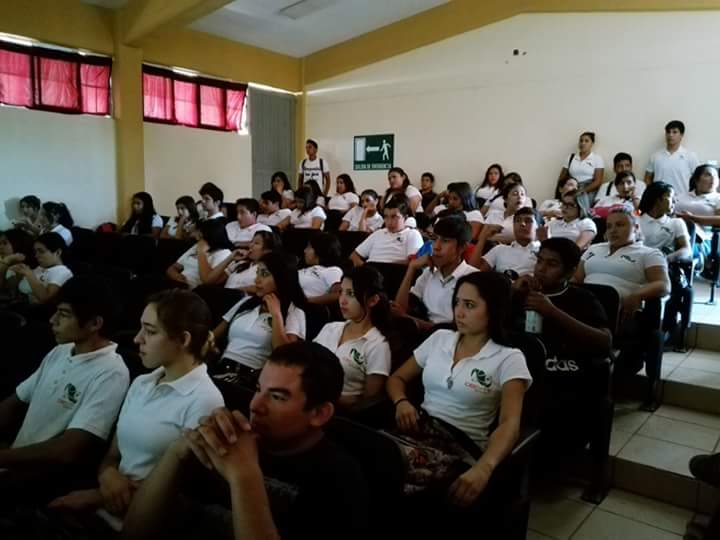
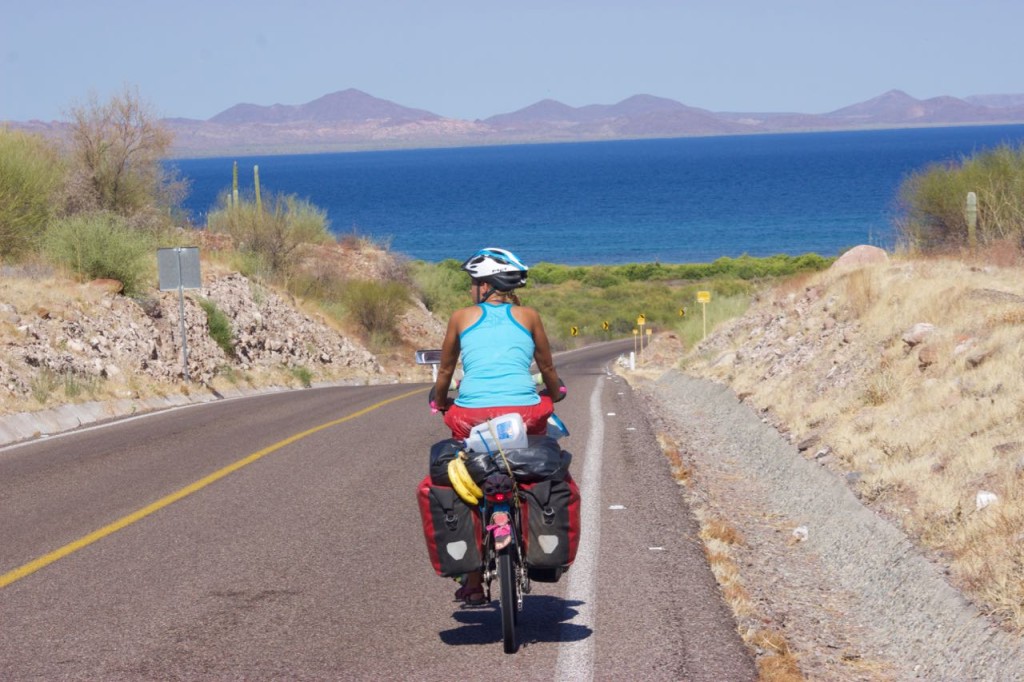
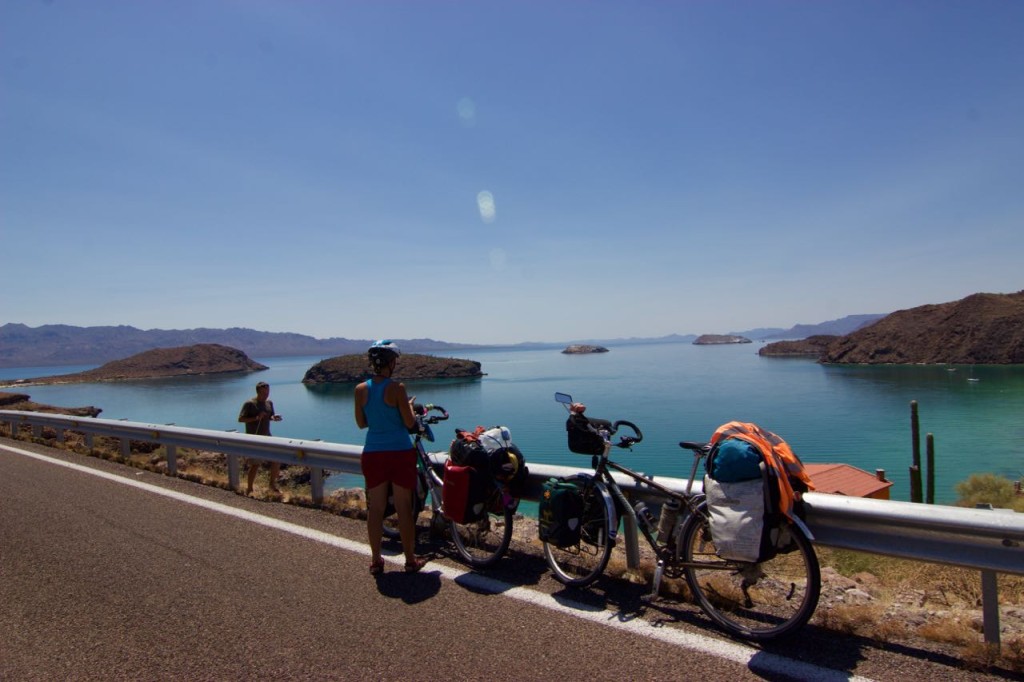
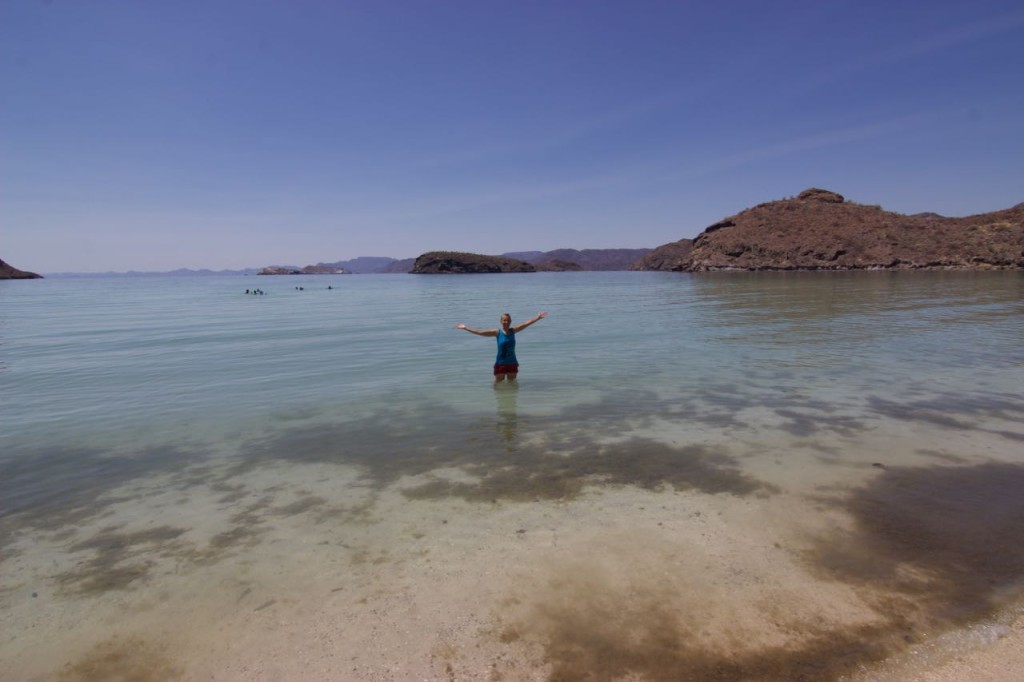
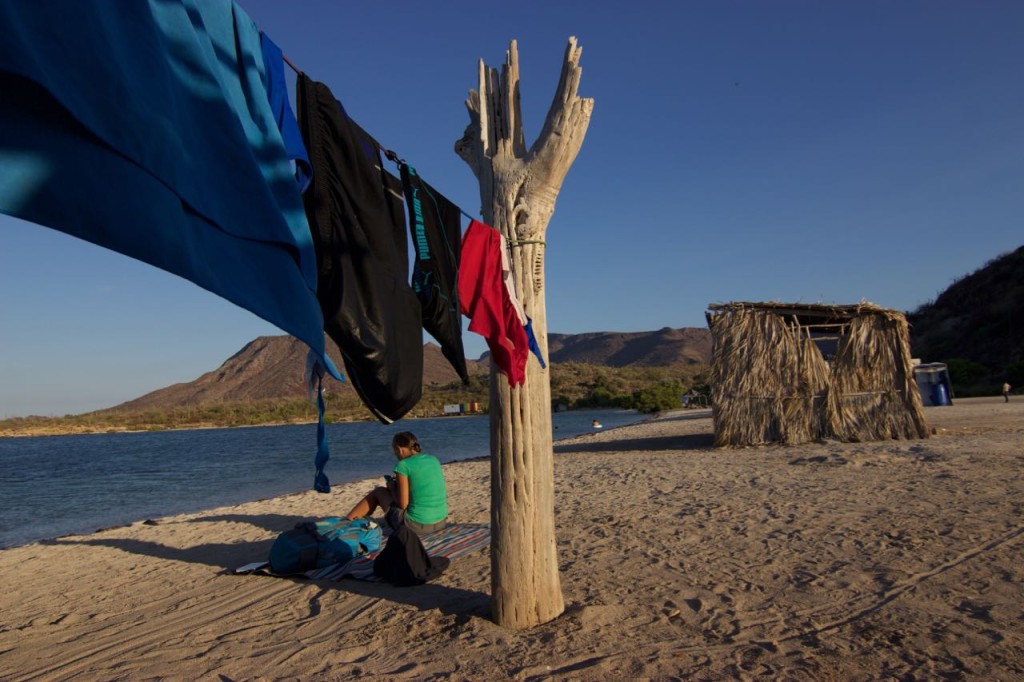



















Pingback: The last desert ride – Baja Sur by bike - Tasting Travels